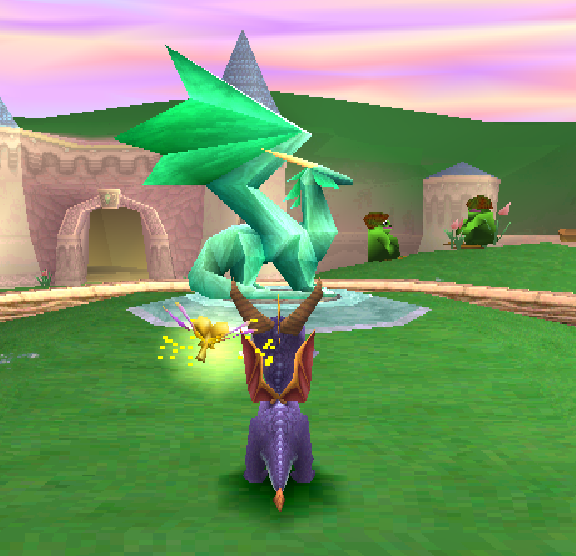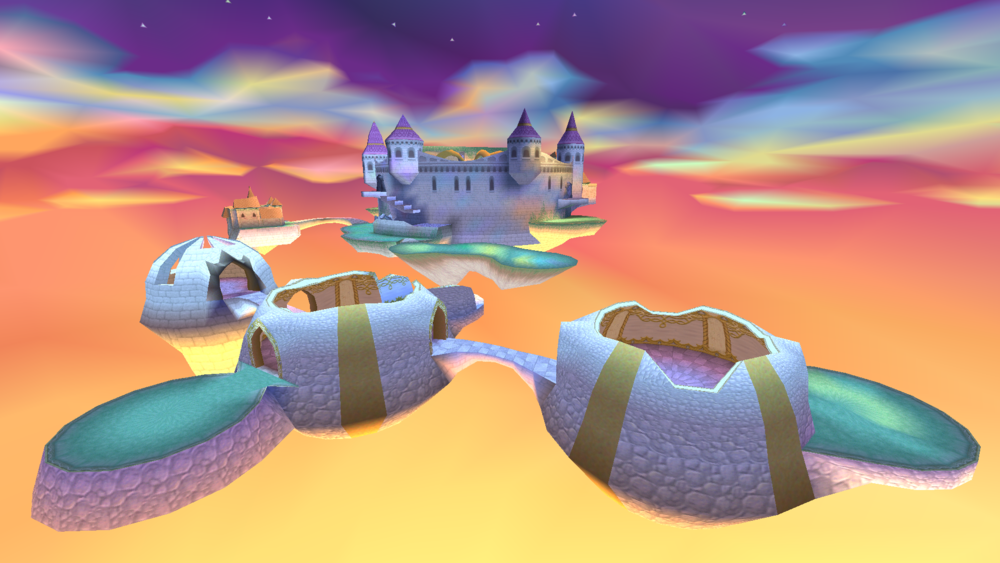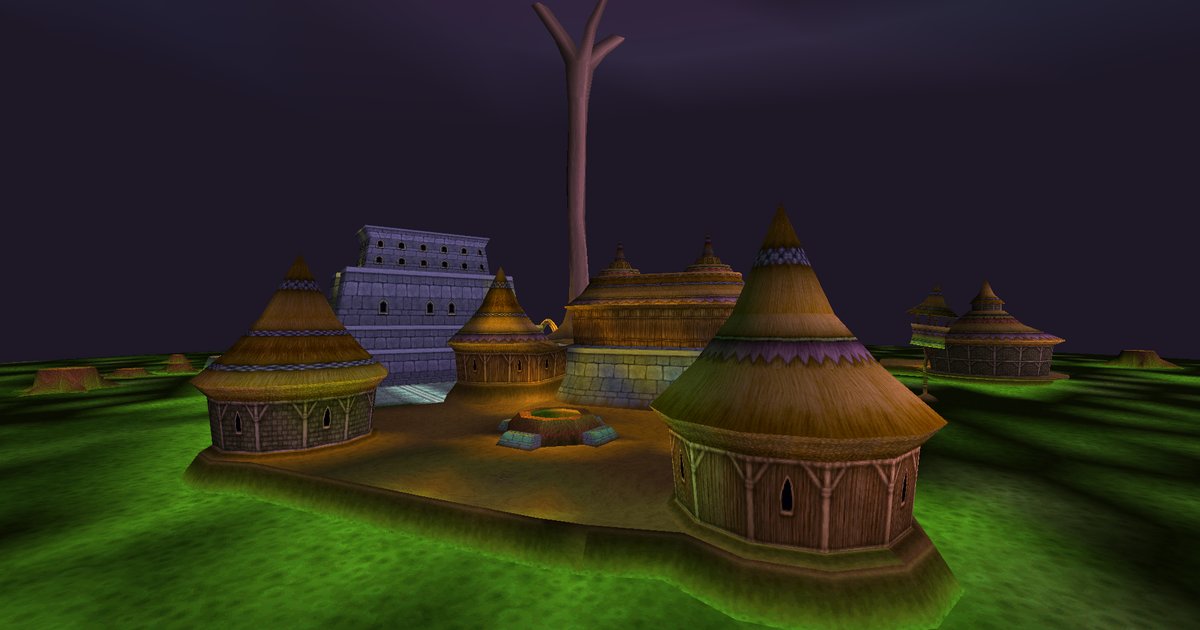1998 was potentially the most ‘90s’ year of the entire decade. Ricky Martin topped the charts, Jim Carrey won the Oscar for Best Actor, Apple released the now-iconic iMac, and Pokémon burned deeply into the hearts and minds of Western children. Video games were certainly no slouch in ’98, and not just in the realm of pocket monsters: countless other legendary games were unleashed upon a rapidly-expanding gaming public. StarCraft (and its expansion Brood War), Ocarina of Time, 1080 Snowboarding, Banjo-Kazooie, Heart of Darkness, F-Zero X, Baldur’s Gate, Half-Life, Mario Party…the list goes on.
There was nobody more comfortably seated at the top of the gaming world though, than Sony. The PlayStation already had a fantastic library under its belt; by September 1998 it boasted stone-cold classics like Gran Turismo, Tekken 3, Final Fantasy VII, Tomb Raider, Resident Evil, Oddworld: Abe’s Oddysee, and so, so much more. Those games were all very ‘mature’ titles and, while the PlayStation’s advertising heavily revolved around that demographic, Sony knew that the younger market was paramount to success.
It’s in this vacuum that the ‘mascot platformer’ came into being. Croc: Legend of the Gobbos and two Crash Bandicoot games were console best-sellers by September of 1998, but there was a newcomer on the horizon. He was small, purple, and had a hot streak in more ways than one: Spyro the Dragon hit North American shop shelves on September 9th, 1998 – 20 years ago today.
Born from a dragon fever that gripped developer Insomniac Games following the release of Dragonheart, Spyro became an instant success. IGN gave it “Two claws up.” Gamespot was relieved that there was “finally a proficient, fully 3D platform game for the PlayStation.” It would go on to sell more than 4.8 million copies. What was the secret behind this success? Why did a tiny purple dragon become a de-facto console mascot? Can I justify putting off actual work to replay one of my all-time favourite games? Only one way to find out!

Spyro isn’t known for its story, but this is the late 90s! Game narratives wouldn’t be taken ‘seriously’ for a good few years, but that didn’t stop the game’s writers adding some fluff to the manual. Remember those? I miss manuals.
Peace reigns in the five Dragon Worlds, but not a 90s ‘End of History’ peace. It’s more of a ‘Phony War’ peace, because there’s a nasty gnorc called…Gnasty Gnorc, whose contempt for dragonkind earns him a big ol’ banishment. That suits him though, as it allows him to perform twisted magical experiments. Finally, he finds exactly what he wants. Gnasty sits and waits to make his move…
Meanwhile, an interview for television is taking place. Yes, TV. Boom mics and everything in a fantasy world. It was the 90s, okay? Dragons discuss the state of the worlds, before moving on to Gnasty Gnorc. They take the opportunity to drop hot disses on him, in full view of the cameras. Problem is, Gnasty is watching – and he’s not a happy chappy. He unleashes his new spells, transmogrifying some of their precious treasure into his minions and scattering the rest. What’s more, he’s petrified each and every dragon in the five worlds (or was it six?) …except for one.
Spyro, the smallest dragon, was “playing hooky” and managed to avoid getting encased in crystal. Now it’s his job to free all 80 dragons and collect every single one of the 12 thousand gems (or was it 14 thousand?) that Gnasty’s thrown all over the place like a messy prick. “Go get ‘em, Spyro!”
Charging with flames in my eyes
Spyro’s gameplay was received positively in 1998, and still holds up today. Attacking and moving come together so smoothly that Spyro’s movement mechanics would remain (mostly) unchanged for years to come. You have two attacks; flames shot from Spyro’s mouth and the sharp points of his horns. The latter is part of a charge attack, which is just one part of Spyro’s repertoire. Spyro can also glide from a jump, which is where the game’s movement identity truly comes into its own. Gliding is utilized basically everywhere, from getting across simple obstacles to discovering secrets. Spyro’s health is indicated by his dragonfly buddy Sparx. As one freed dragon will tell you, his colour indicates his power. Lose Sparx and get hit, and you’re toast.
Full 120% completion (take that, high school maths! You can go higher than 100!) is reliant on mastering gliding. It’s a mighty fine coincidence then, that it’s simply so much fun to use. This mechanic is what truly blew me away when I played this game for the first time at an age I can’t remember. I was a very easily impressed kid, sure, but even now I get a little giddy when I pull of a sick glide. Imagine my shock, then, when I learned that there are flying levels. Woah. Flying levels operate like a racing game’s time trials mixed in with your local escape room. They’re still fun to zip around in and they, too, still control just fine. Better than many other newer games could pull off, even. These levels are also the hardest in the game, which isn’t saying much. At the time, people lamented this lack of real difficulty and that’s fine. Different strokes for different folks. That said, the chilled-out vibe that the easy difficulty leaned into fits the broader aesthetic goals of Spyro more. More on that in a bit.

See? He’s psyched too
But there are movements that have gone to buy cigarettes and never came back. Spyro’s rolls, mapped to L1 and R1, are the most notable change. Their use in this game extends to the enemies in the first boss stage, ‘Toasty’, and basically nowhere else. It’s a real shame that it wasn’t used more extensively, because it still gives you slightly more to play with. Like rolling, this is the only game where Spyro can simply ‘drop’ from the sky mid-glide. Future games would incorporate a ‘flutter’ from Spyro’s wings where you can get just a little bit more elevation from a glide, leading to some close calls. But like I always say, you gotta risk it to get the biscuit.
Speaking of risk, charging is much faster than walking. So, it makes sense that you’d do it all the time, right? But you can’t, because you’ll eventually bump into something. That’s with a heavy and smug emphasis on ‘you’. During my latest playthrough, I don’t think I spent more than 15 minutes on the ground in total that wasn’t spent charging. Unlike gliding, having a grasp this goddamn hard on charging isn’t necessary to complete the game. It just means that Spyro boasts an optionally-lifted skill ceiling, and that I’m better than you. I wish more games these days had skill ceilings like this, so I could be better than you at them too.
Born free to follow your perfectionism
Let’s hang onto that word for a while: ‘optional’. Do you remember the last time a game let you do something on your own accord? Don’t answer that, because if you’ve played a single-player game in the last decade you’re most likely to recall the last time a game didn’t let you do whatever you wanted. In fact, Spyro could almost be considered one prototype of the now-dominant open-world sandbox game. ‘Player agency’ (how much a player can do based on their own decisions and not the game’s) is everywhere: objective completion, which levels to pick and how thoroughly to explore them, and even which collectables to leave behind as you grumble sour grapes to yourself.

The first of many
Banjo-Kazooie is often held up as the ultimate ‘collect-a-thon’, but modern critics are pretty damn sick of all the stuff you have to collect. Maybe that’s a sign of the enduring legacy of the collect-a-thon’s downfall, but it’s important to note that Spyro doesn’t get these complaints. The number of collectables in both games isn’t far off from being identical, but the key difference is agency. While Rare’s classic N64 game is more deeply rooted in traditional, more linear game structures, Spyro leaves you free to progress through the game in any order or manner you choose. Wanna zip through a level then move on to the next one? You got it. Like overturning every stone and inspecting every nook and/or cranny? No problemo. Whatever your approach, you can always come back to a level – even if you’ve collected everything. The open nature of Spyro’s world is one thing, but it would have been wasted if you had been any less liberated.
What Banjo-Kazooie also lacked was a more reliable way of getting collectibles that are just. Out. Of. Reach. Luckily, Spyro has a trick up its sleeve. Remember Sparx, the dragonfly health bar? He also picks up gets that are near you, making collecting them smooth and easy. If you take too many hits and lose him, however, you’ll have to pick them up by yourself until you can restore his health by killing ‘fodder’ located throughout the map.
The only real restraint on the player’s agency is the transition between worlds. Balloonists will float you through the air from one world to another but progressing through worlds is gated behind a certain amount of a certain collectable. This is fairly liberal as far as roadblocks go, though. The requirements are something piss-easy like freeing 10 dragons or collecting a peasant’s worth of gems. You don’t even have to play every level in a world to progress to the next one. Even the bosses are optional!
This is one of the reasons that this game resounds so strongly with so many people. If you’re my age, chances are you also played this game from a young age. Let me ask you this: How cool was it to be given that level of freedom back then? It made the whole world feel like…well, a world! A living, breathing, organic world that you were exploring! And that world was so beautiful in both sight and sound.
A neat little package
If you’ve read any of my reviews, you’ll know that I value atmosphere a lot. It’s all well and good to have strong gameplay or a stunning art style, but you have to sell it to me. I know I’m not alone here, which is why you’re still reading this retrospective about a game that’s older than people that can legally drink. Spyro’s atmosphere may not be the most iconic in gaming, but I think it’s got one of the best.
Insomniac weren’t buggering around with the aesthetic of Spyro. Extensive work went into the models, the textures, and even the colours. It was universally praised for its graphics in ’98, and those polygons are still being praised today. Its graphics were actually revolutionary; Spyro is widely credited with being the first console game to have true ‘level of detail’. Goodbye to the dreaded ‘distance fog’, and hello to seeing (lower resolution) objects in the distance! The dynamic lighting absolutely makes this game’s mood, too.
And hoo boy, did Spyro make use of it. Areas far away were off in the distance, waiting for you. When I said gliding was awesome, that’s because this technical miracle (for 1998) did all the work. Levels each have their own lighting profile, adding to each one’s identity. The world’s open-ended majesty would be nothing without it, and gaming itself would never be the same. Far away, the skyline was littered with tall spires, rolling fields and clumped mountains. The skies themselves are nothing short of gorgeous, still my favourite skyboxes in any game. The UI is even 3D-modelled, which was a disappointing absence from the next two games.
Level variety isn’t lacking, not one little bit. Each world boasts a unique and well-executed aesthetic, as well as a unique set of enemies. These poor saps, up against a mean little runt of a dragon, don’t simply interact with you. Most enemies will react and interact with each other, long before you even arrive. You’ll often find enemies fighting amongst themselves, or even moon you as you burn their tents. Certain objects in the world will have unique reactions to your actions. Cacti, for example, will become charred if you flame them. Without hyperbole, it really is a living, breathing, organic world!
I mean come on, this is gorgeous
What good is a stage without its players? Even though its enemy AI was clever in its scripts, Spyro didn’t boast a wide variety of written characters. Most of the rescued dragons will greet you with “thank you for releasing me!” and just piss off to do whatever they were doing before. Probably counting gems like a stingy bastard. Just under ten seconds of (skippable) cutscene and boom, one more dragon. But Insomniac, always one for polish, went one step beyond. Models and textures were used interchangeably to give each dragon a unique look, which is just one of the small touches that make Spyro such a rich world to run about in.
Sure, the visuals are great, but how does Spyro hold up sound-wise? Let’s answer your question simply and comprehensively: this year’s remaster will feature the original, 20-year-old, soundtrack as an option. Spyro was Stewart Copeland’s first game score, having done extensive solo work after leaving the legendary rock group The Police upon their breakup in 1984.
Copeland would stay on to score the other two games in the original Spyro trilogy, but the first game’s score definitely sticks with me more. Each and every level has a unique theme, and all of them are bangers. It’s literally impossible to have a discussion about this game without bringing up Copeland’s ear massages. The OST’s been a mainstay in my portable music since my first MP3 player more than a decade ago. There’s something there that my tiny music vocabulary can’t quite explain, but it’s absolutely magical. Perfect country driving music, anyway. Try it, you won’t be disappointed.
The voice talent on show in Spyro is small in size, but what it lacks in quantity it more than makes up for in quality. Carlos Alazraqui, Clancy Brown, Michael Gough, and Jamie Alcroft were newbies to video games when they played almost every role in the game (here’s looking at you, Michael Connor). Now, they’re the cream of the crop when it comes to video game voice artistry. The sound design in general was fantastic (the egg thief laugh still haunts your nightmares, doesn’t it?), but these champs deserve as much praise as they can get. In fact, this entire game deserves all the praise it can get.
Here’s to you
All of this comes together to create a gaming experience that we haven’t seen anything like since. Spyro’s sequels may have been mechanically and graphically similar, but they lacked a certain finesse. There was something missing from the sequels that was there in spades for the inaugural entry. I think it’s down to polish, and Insomniac simply having more time to make Spyro than Spyro 2 or Year of the Dragon.
The sequels abandoned the 3D-modelled UI, as the series’ growing writing ambition warranted a less time-intensive method. Complaints about the game’s ‘easy difficulty’ led to more roadblocks to player agency. Forced backtracking, yay. The lack of characters was mitigated by a larger cast of mythical characters with each game. This ‘furry proliferation’ got out of hand almost immediately after Insomniac abandoned the franchise, following the fate of Sonic the Hedgehog.
I mean sure, objectively the sequels are better games. Year of the Dragon even has a skateboard. A skateboard, dude! But there’s a polish missing from those sequels that the first game had. That whimsical fairytale aesthetic, that original identity that captured the hearts of millions, was cast aside for what other 3D platformers were doing. The sequels had identity too, but it just wasn’t the same. The way I see it, 1998’s Spyro is Insomniac’s original passionate vision for that little purple dragon. Everything else is just an imitation.
Arana blames her stunted social skills and her general uselessness on a lifetime of video games. Between her ears is a comprehensive Team Fortress 2 encyclopedia. Her brain remains at large.




































